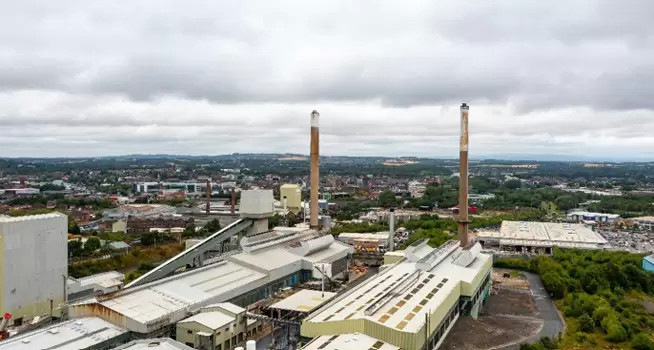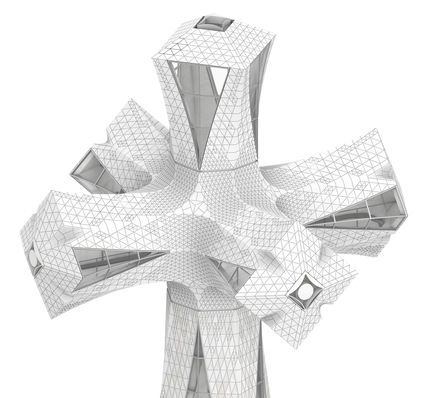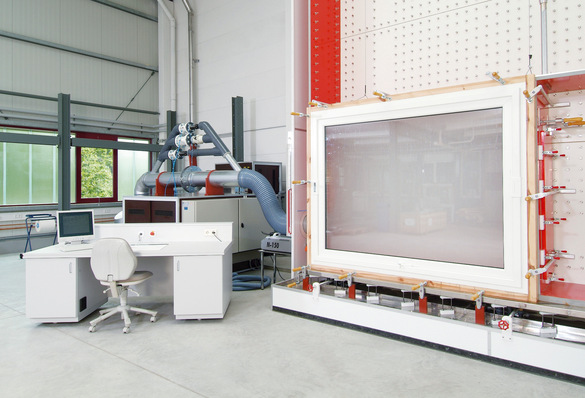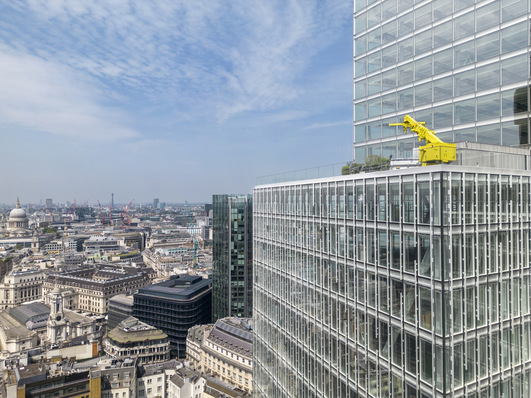Building on land does not generally contribute to more biodiversity or the creation of new habitats for animals. When construction vehicles and excavators arrive, flora and fauna usually have to give way. Especially in the densely populated Netherlands, competition for land is a major challenge, as is effective protection of the climate, nature, soil and water. The Triodos Bank office building on the De Reehorst estate in Driebergen-Rijsenburg, around 45 kilometres from Amsterdam, which will be completed in autumn 2019, shows how the functions can be reconciled in an exemplary manner: The construction and design of the new building, which covers around 13,000 square metres, are based on the principles of nature and biomimicry, i.e. they imitate nature. Through organic forms, refined materials and a colour scheme coordinated with nature, the building complex, which extends over three interconnected towers with three, four and five floors respectively, merges almost seamlessly with the landscape. Its carbon footprint over its entire life cycle is minimal. And if the building needs to be disassembled and reassembled, it can be quickly unscrewed and screwed back together.
Impulse generator for circularity

Schüco International KG
As extraordinary as the concept of the architectural masterpiece, as demanding was the process of creation. On the one hand, fitting the new building into the landscape required a great deal of planning so that it would look like a part of the ecosystem. After trying to find an adequate office building for the growing workforce near Utrecht or Amersfoort was in vain, the decision was made to build the new office building on the De Reehorst estate in 2011. It went without saying that the building should have a positive effect on people, nature and the environment. After all, the sustainability bank, which is active in 43 countries and managed total assets of over 20 billion euros in 2020, only invests in projects with social, ecological and cultural added value. Naturally, the new building also had to reflect this philosophy. Ideally, the result would be a building that provides impulses for circular construction.
The landscape defined the design
In order to integrate the building as gently as possible into the partial plot on protected land spanning almost 30 hectares, the landscape architects from Arcadis, together with the construction specialists from Copijn, developed a careful landscape concept that qualitatively complemented the habitats that had been created over decades. For example, watering holes were added for deer, badgers and foxes, new connecting paths were created and compensatory plantings created additional retreat opportunities. Out of consideration for the flight paths of bats, the landscape planners and building planners agreed that the building heights would remain below tree level. In addition, they agreed on an insect-friendly green roof, which also has an insulating and cooling effect.

Schüco International KG
The facade is an eye-catcher and a stabilising element at the same time
The visionary Rau gave expression to the spectacular character of the building in the form of an amorphously curved structure with a completely glazed aluminium facade. The breath-taking facade design could be implemented well with a special Schüco construction based on the AWS 75 BS.HI+ window system as an insert element. The highly thermally insulated block windows in 75 mm basic depth without visible sash contours with extremely slim outer frame profile, concealed drainage and Uw values between 1.5 and 2.0 W/(m²K) meet the highest energy and architectural requirements with the greatest possible transparency. The variant designed here ideally emphasises the light character of high-quality aluminium window constructions. In addition, aluminium as a material has further advantages: Durability, stability, robustness and 100 per cent recyclability.
[Sustainable and economic student accommodation in Denmark]
The facade substructure took on an important stabilising function, as it supports the load-bearing wooden elements. The passive house-certified add-on construction Schüco AOC 50 in 50 millimetre face width on steel (ST) was convincing here, both technically and in terms of design, with outstanding performance features that combine energy-efficient construction with efficient fabrication and safe installation. A new insulation principle enabled the realisation of a highly thermally insulated vertical facade with a maximum Uw value of 0.8 W/(m²K). The practical implementation of the large pane dimensions with triple glazing was achieved by means of innovative, patented screw guidance, which allows infill thicknesses of up to 64 millimetres with a maximum weight of 1,500 kilograms. The sealing components without the use of sealants in the vertical facade proved to be advantageous for professional execution. In addition, the bolt-setting technology used on steel substructures, which is approved by the building authorities, favoured a shorter production time compared to welding.

Schüco International KG
A feeling of space like in a cathedral
Inside, the natural authenticity of the materials is captivating: the very high storey heights, the mushroom-shaped wooden rafters framing the core and the consistent use of wood for floors, ceilings, columns and shafts create a feeling of space like in a "cathedral of wood". The construction and the glazed aluminium facade, which consists of 1,280 individual panes, ensure the best possible use of daylight far into the interior of the room. Transparent partition walls, which also serve as noise protection, allow an optimal view of the landscape from almost every one of the 1,000 workplaces. Practical features are the floor-to-ceiling windows in the 3.60-metre facade grids, which can be opened and allow natural ventilation. A visual connection between the floors is provided by galleries that can be reached via spiral staircases. Short distances encourage people to change their workplace from time to time or to have a coffee at the espresso bar on the ground floor while meeting colleagues. A total of 1,615 cubic metres of glulam and 1,008 cubic metres of cross-laminated timber as well as five whole tree trunks were used in the building, which was awarded the "BREEAM Outstanding" sustainability certificate. The 2,623 cubic metres of wood store more than 1.6 million kilograms of CO2 and take just under 12 minutes to regrow. Instead of using conventional composites, which would have made it impossible to disassemble and reassemble the building by type, 165,312 bolts between 240 and 500 millimetres in length hold the structure together.
Electric vehicles for flexible energy storage
Since the facade was not available for energy generation by PV modules and a paradise for insects was to grow on the roof surface of the building, the engineers had to think of an alternative for accommodating the PV modules, which were to produce around 506,000 kilowatt hours of solar power per year on more than 3,000 square metres for the energy-neutral operation of the building. Why not use the carport roof area for this purpose and include the electric vehicles parked underneath as active energy storage units in the building energy concept via bidirectional charging columns? The innovation project "We drive solar", which supports novel solutions for mobility and energy systems as part of the EU research programme "Horizon Europe", helped to realise the idea.

Schüco International KG
Material fit for the future
The project partners also broke new ground in the creation of the BIM-based material passport, which provides information on the origin and recyclability of all materials, products and components so that they can be reused without problems in the future. Unlike usual, the planning process required for this did not proceed trade by trade, but took place in integrated cooperation. Since everyone saw the building project as a learning process and team spirit determined the cooperation, they quickly got to grips with the procedure. The biggest hurdle was to obtain the IFC files (Industry Foundation Classes, an open standard in construction for the digital description of building models) in the required data quality from the suppliers, manufacturers and subcontractors. In future, the material values will be monitored by the previously mentioned Madaster platform. In this way, the building is not only a material store, but also a material bank, the values of which can, for example, serve as fixed assets or be capitalised in other ways.
[A Dutch building with a new glass facade that includes portholes]
Whether circular construction can be a driver for the digital transformation of the construction industry remains to be seen. In any case, a new understanding of planning is essential. In addition, the circularity of buildings is likely to lead to interesting developments in terms of the valuation of real estate in the future. Consequently, the extended office building of Triodos Bank could still provide ground-breaking impulses.













